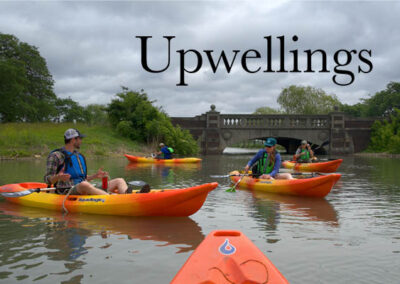
Coastal wetlands provide critical habitat for birds, fish, and other wildlife. As degraded coastal wetlands are restored, however, some species may fail to see these improved areas as suitable habitat. Dustin Brewer, Assistant Professor of Wildlife Management at Lake Superior State University, worked with U.S. Fish and Wildlife Service biologists to play audio recordings of migratory wetland birds at multiple potential habitat sites in central Michigan. Their goal was to improve understanding of how audio playback might help attract rails and other migratory marshbird species to restored habitats. Dustin worked on this project as a MISG graduate research fellow when he was a PhD student at Central Michigan University.
The project team wanted to determine if broadcasting rail calls overnight during spring migration could affect site selection by Virginia rails (Rallus limicola); soras (Porzana carolina); yellow rails (Coturnicops noveboracensis); and king rails (Rallus elegans). The team completed in-person marsh bird surveys in 2021 (control year) and 2022 (experimental year), when they broadcast vocalizations of focal species overnight in central Michigan at study sites that ranged from lower- to higher-quality habitat.
They found a 218% increase in rails in the experimental year compared to the control year within the same wetland areas for Virginia rails and soras. The effect was particularly apparent during peak migration and breeding periods. In addition, numbers were most pronounced in higher-quality habitat. Rail abundance was lower at lower-quality sites compared to nearby high-quality sites, even where rail call broadcasts did not occur. These results suggest that broadcasting overnight playback of the calls of focal species could influence site selection by rails, especially in concert with habitat restoration initiatives.
Because the differences in rail abundance at a location between any two years could be due to a variety of factors related to the dynamic nature of wetlands, the team also compared their experimental year to 8 additional years of prior data. They accomplished this using eBird data, a participatory-science initiative used to track birds. The experimental year saw an exceptional increase in the number of rail individuals reported per checklist and proportion of checklists with a rail reported within the study area. They also found that rail numbers increased during the post-experimental year, including abundance and occurrence, though to a lesser degree than the experimental year.
Although more study is required to confirm these trends, this research shows that overnight playback could be a useful tool for attracting focal bird species, particularly if migratory behavior and life history traits, such as diet, are considered. This study showed that overnight playback can attract migratory rails, including soras, Virginia rails, and potentially king rails, to a wetland complex. Given their rarity in the region, black and yellow rails will require further study. Wetland managers may be able to attract these species via broadcasted cues during years when, for example, appropriate water depths will be maintained throughout a large proportion of a wetland complex. Managers could use arrival dates of focal species when deciding if and when to manipulate water levels or other habitat variables.
Find the full article in Avian Conservation and Ecology.










